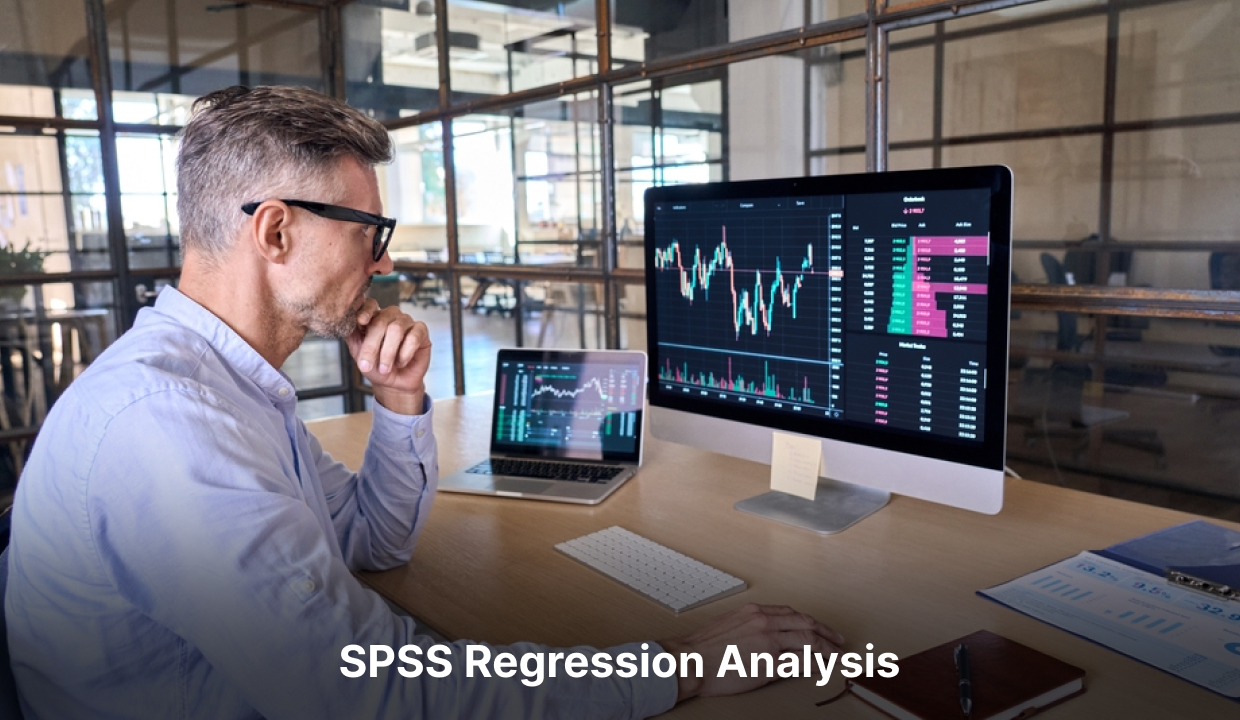How Does Regression Analysis Work?
How Does Regression Analysis Work?
Regression analysis is a statistical methodology employed to comprehend and measure the association between a reliant variable and one or more autonomous variables. Its purpose is to forecast or approximate the value of the reliant variable based on the values of the autonomous variables.
Here’s a step-by-step explanation of how regression analysis works:
-
-
- Define the problem- Identify the dependent variable you want to predict or explain and the independent variables you believe influence it.
- Gather data- Collect data on the dependent variable and the independent variables. The data should be quantitative and have a sufficient sample size.
- Formulate the model- Choose a suitable regression model based on the problem’s nature and the data type. The most common types of regression models are linear regression, multiple regression, polynomial regression, and logistic regression.
- Assess model assumptions- Before applying regression analysis, you must ensure that certain assumptions are true. The key assumptions encompassed are as follows:
-
-
- Linearity
- Independence of errors
- Homoscedasticity (constant variance of errors)
- Normality of errors
-
- Estimate the coefficients- Using the available data, the regression model estimates the coefficients for each independent variable. These coefficients represent the strength and direction of the relationship between the independent and dependent variables.
- Assess model fit- Evaluate how well the regression model fits the data by examining the goodness-of-fit measures. Standard metrics include the coefficient of determination (R-squared), adjusted R-squared, and the F-test.
- Interpret the results- Analyse the coefficients to understand the impact of each independent variable on the dependent variable. Positive coefficients indicate a positive relationship, negative coefficients indicate a negative relationship, and the coefficient’s magnitude indicates the relationship’s strength.
- Make predictions- Once the model is validated, you can use it to predict the values of the dependent variable based on new values of the independent variables.
- Evaluate the model- Assess the accuracy and validity of the regression model by examining the residuals (the differences between the predicted and observed values) and using additional evaluation techniques like cross-validation or hypothesis testing.
Regression analysis is a versatile and widely used technique to uncover relationships and make predictions or estimations in various fields, such as economics, social sciences, finance, marketing, and machine learning.
Conclusion
Mastering regression analysis is crucial for analysing variable relationships. This comprehensive guide equips you with the necessary knowledge and skills for effective regression analysis. It’s invaluable for research, business problem-solving, and data exploration. Dive into the world of regression analysis and unveil hidden insights within your data. In the realm of research, SPSS data analysis and regression analysis are valuable assets. It helps researchers understand variable relationships and make informed predictions. Remember, regression analysis is just one piece of the puzzle. Rigorous research demands consideration of other statistical techniques and factors. Good luck!

